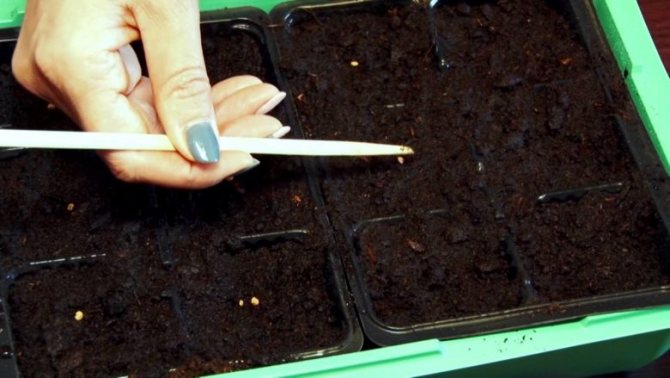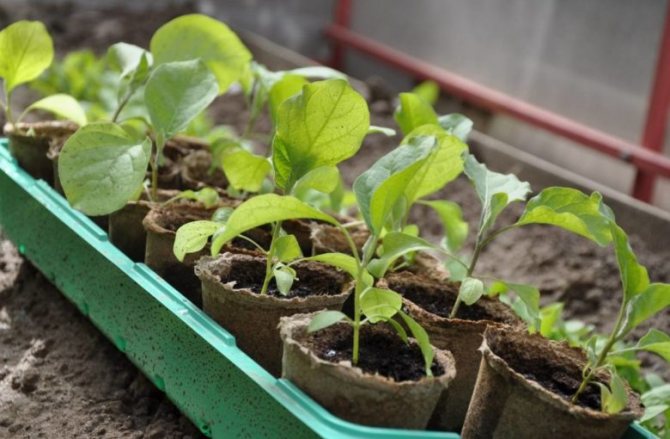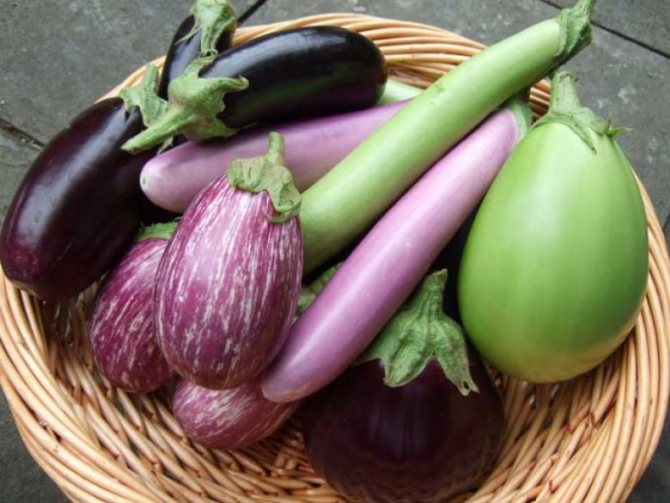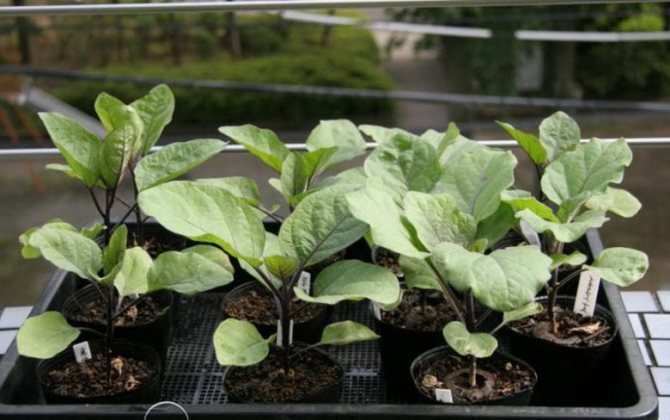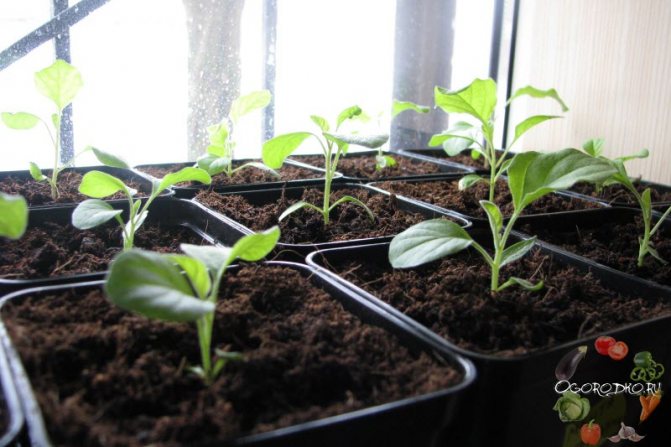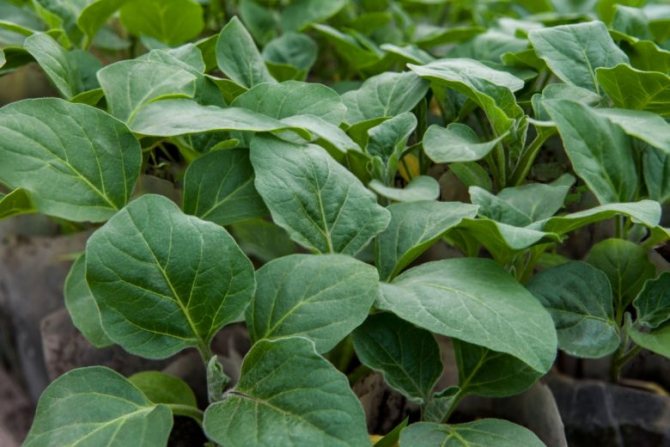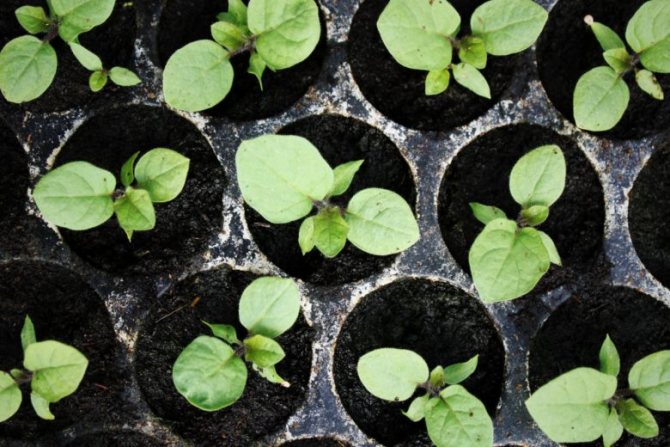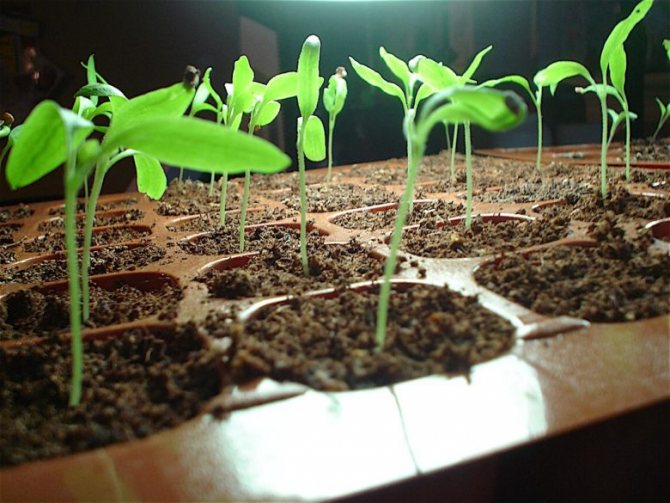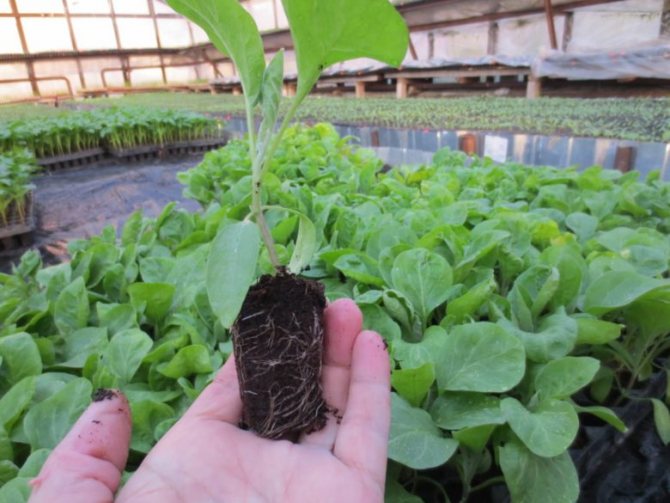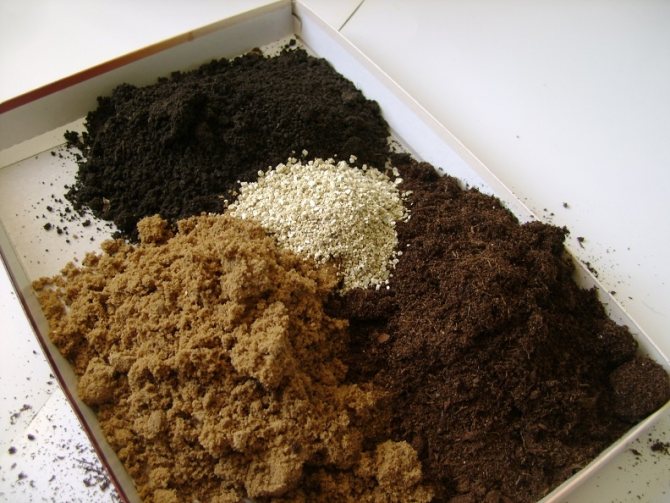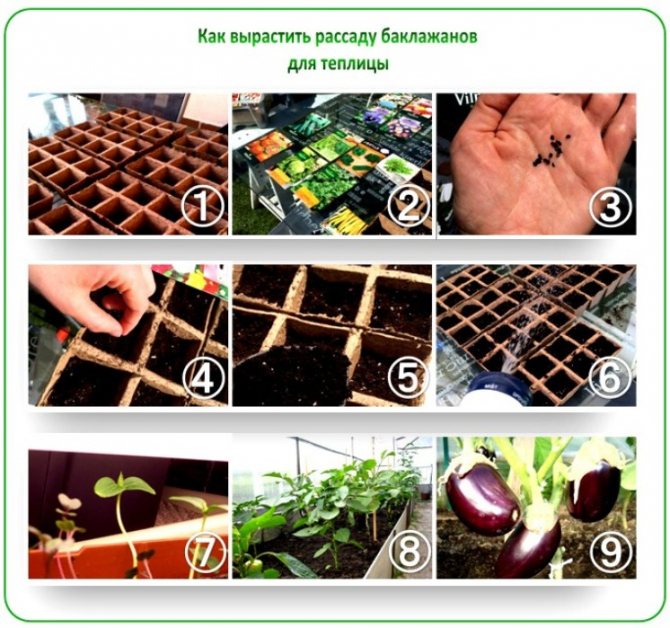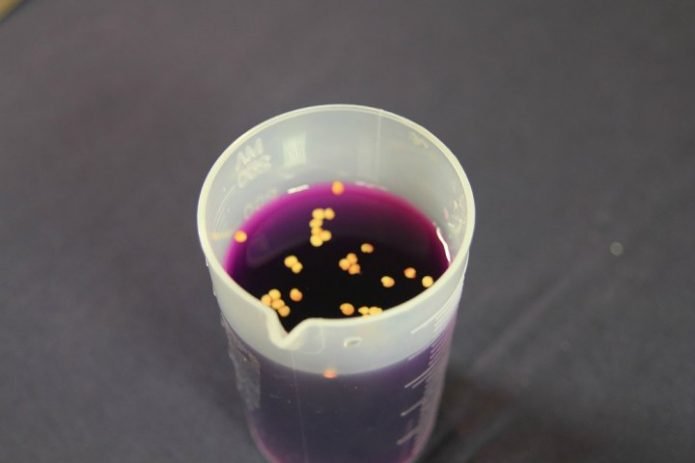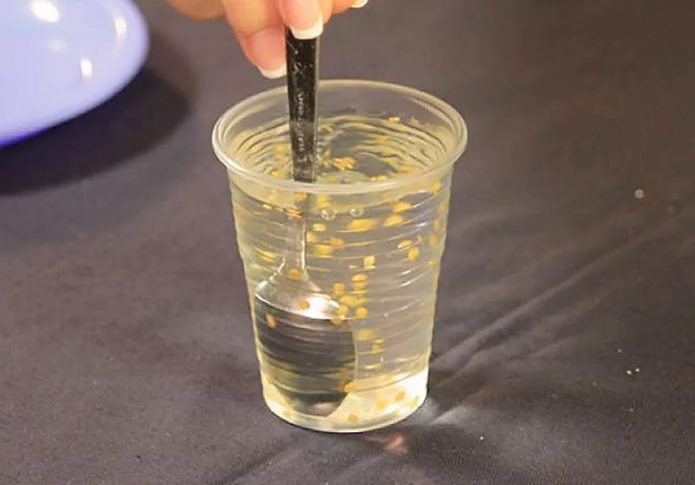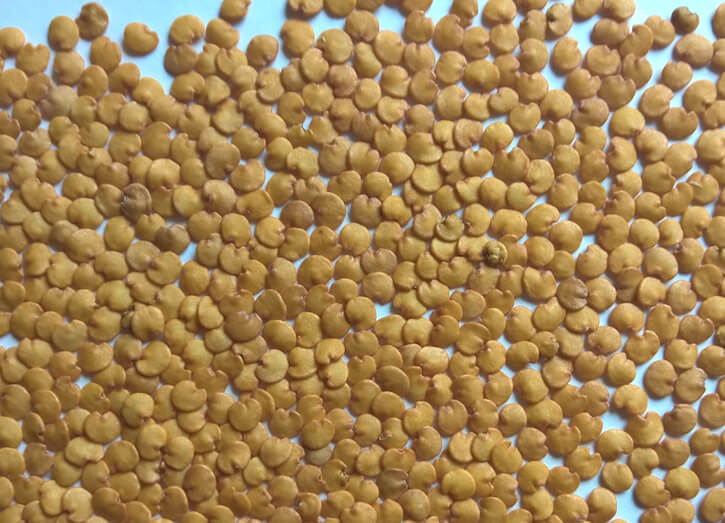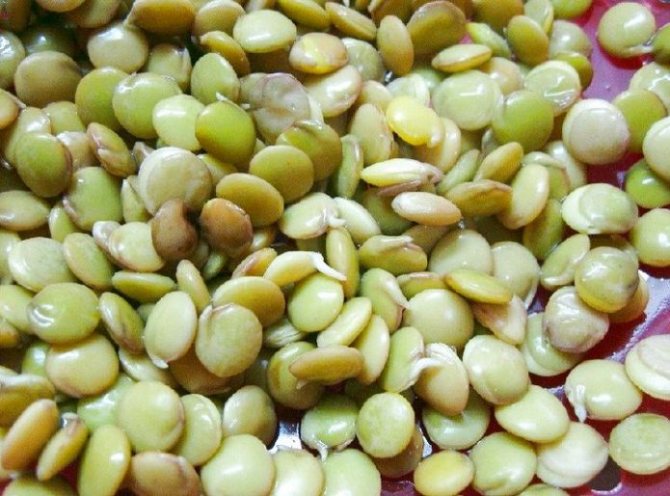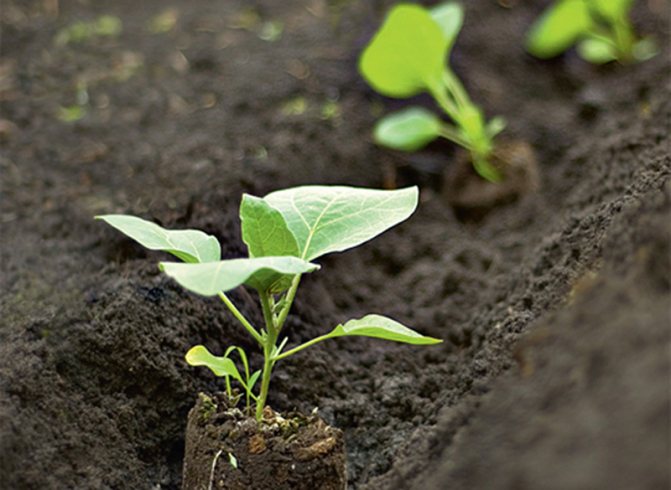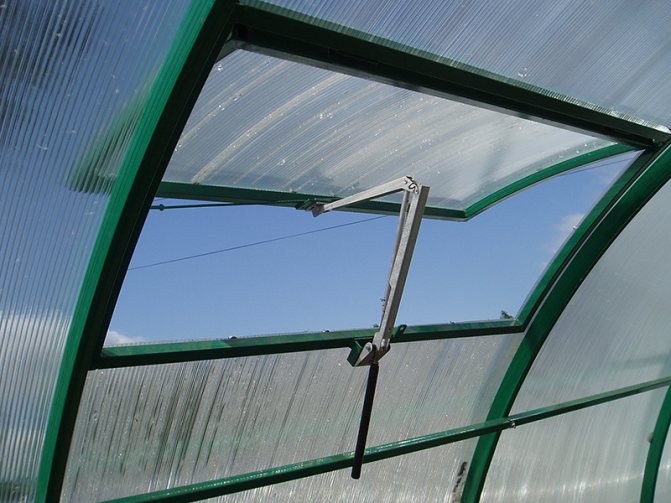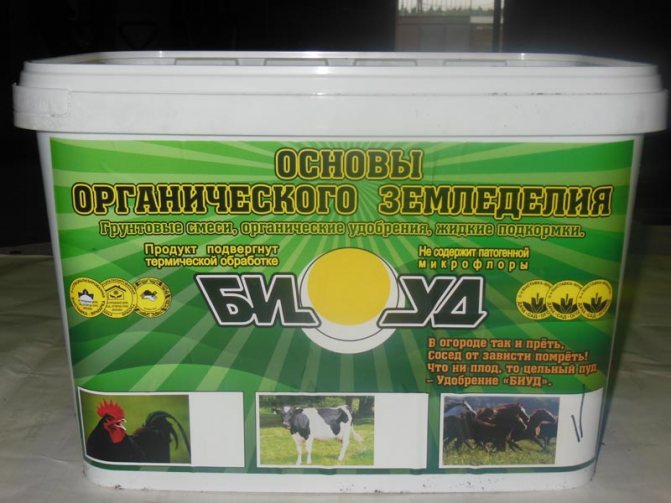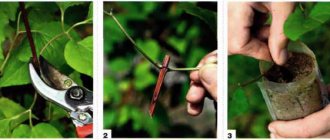Hello, friends.
Let's talk today about planting seedlings of our favorite "blue" eggplants.
Today we will touch upon such topics as the time of planting seedlings, popular methods of planting seeds, as well as caring for seedlings before they are planted in the ground. We will also recommend eggplant varieties.
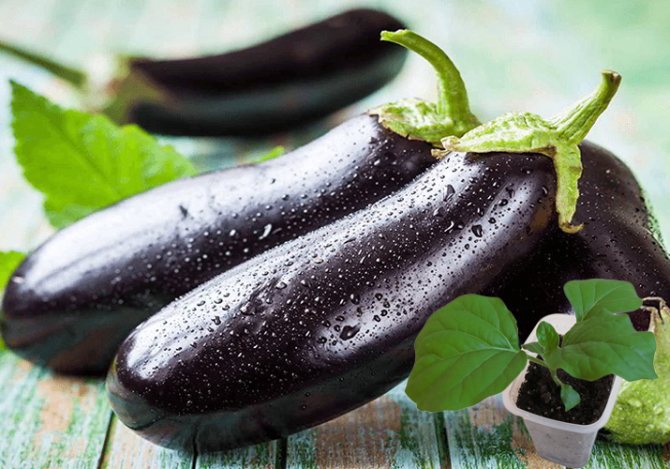
From seed to seedling ready for planting, we will go along this path with you in order to get beautiful, healthy plants at the exit and so that we will be pleased with the harvest in the coming season.
Today in the article:
When to plant eggplants for seedlings in 2019
Eggplant is a plant that takes a long time to grow, develop and bear fruit.
This should be taken into account when planting this wonderful vegetable for seedlings.
In Siberia and Central Russia, you can start planting mid-ripening varieties already in early February, and late-ripening ones even at the end of January.
However, before you do this, make sure you can give your seedlings good lighting (up to 16 hours a day).
Since the day is still too short at this time of year, there will not be enough light from the window for seedlings.
Seedlings will lack light, stretch out, and have weak immunity. In this case, you don't have to think about a good harvest.
Use fluorescent lamps or special plant lamps for supplementary lighting.
If you do not have backlighting, we advise you to opt for early-maturing varieties and plant them for seedlings in early to mid-March, when daylight hours naturally lengthen.
Early varieties of eggplants: Alekseevsky, Behemoth F1, Bibo F1, Valentina F1, King of the North, Killer Whale, Quartet, Maxik F1, Gardener's Dream, Lilac Mist, Solaris, Purple Miracle F1, Black Beauty, Nutcracker F1.
Of the mid-season varieties, the most recognized are: Almaz, Swan, Matrosik, Striped flight.
Most popular varieties
In the beginning, you should decide on the choice of the variety.
The most popular are the following:
- "Joker". With a carpal type of fruiting, from 5 to 7 fruits are formed on each cluster. Distinctive features are early ripening and high yield. Among the shortcomings, there is a tendency for fruits to overgrow with an untimely harvest;
- "Vakula". For cultivation, open ground is preferable, it has a high yield. The bushes are almost without thorns, which greatly facilitates the care of the crop;
- Sancho Panza. It produces rather large fruits, some specimens can reach a kilogram. Refers to medium early varieties;
- "Negus". Differs in a very early ripening period and high yield. The weight of the fruits reaches about 300 grams, but there are quite a few of them;
- "Simferopol 12/105". Bred in Crimea, high-yielding. Suitable for cooking caviar.
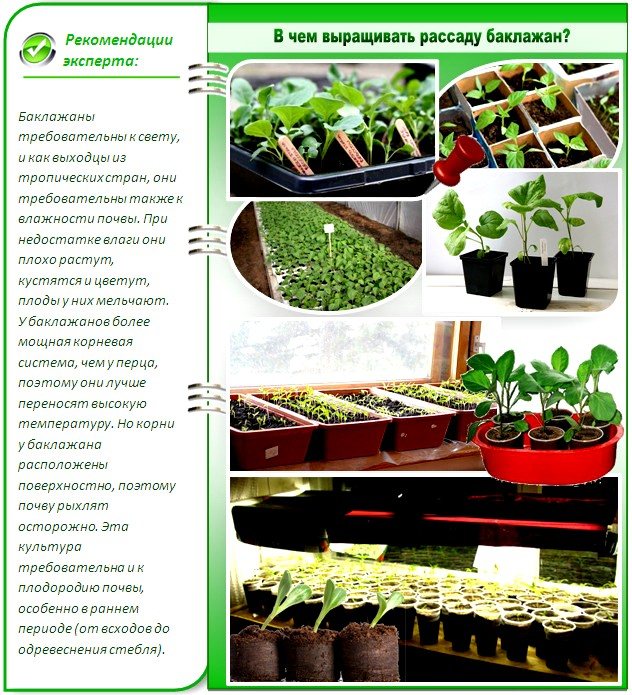

The purchased seed material must be checked for quality. For this purpose, it is placed in a pale, warm manganese solution. Seeds on the surface are discarded. The specimens remaining on the bottom can be used for sowing. You can replace potassium permanganate with a solution of 5% sodium chloride.
Sowing eggplant seedlings in the traditional way
Consider the simplest "grandmother's" method of sowing eggplant seeds for seedlings.
It is very simple and always guarantees good results, time-tested.
Make grooves 0.5-1 cm deep in the ground.
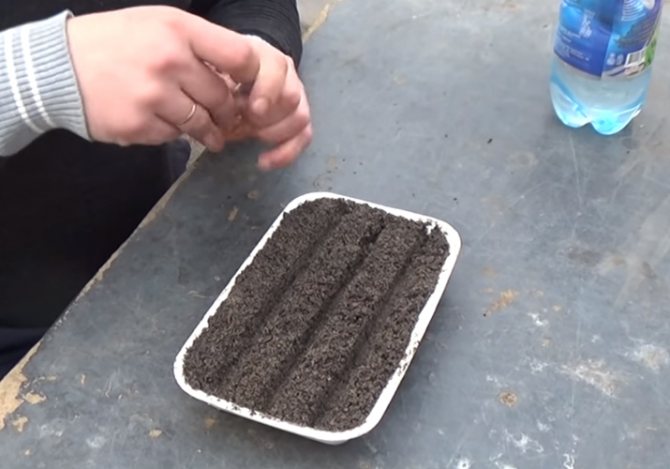

Spread the seeds throughout the furrow. The distance between the seeds should not be less than 1 cm. More is possible.
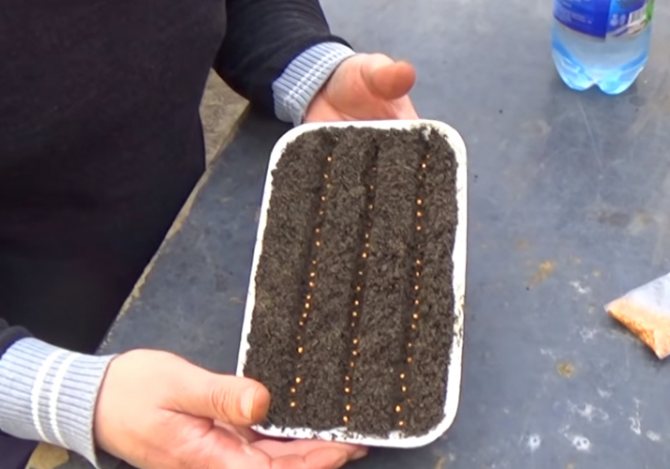

Cover the grooves with soil and moisten the soil well with a spray bottle. This method of moistening prevents seeds from eroding and sinking into the ground.
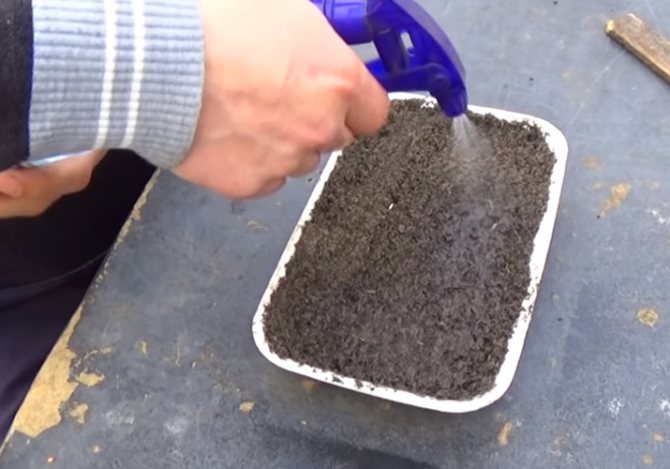

When the ground is moist enough, cover the container with glass or plastic. Place in a warm place.
The temperature required for seedlings is 22-25 degrees.
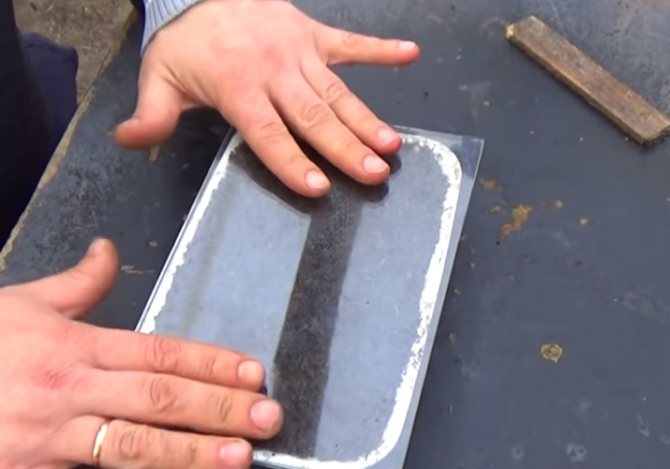

As soon as the seedlings appear, we gradually remove the glass, accustoming the seedlings to fresh air.
Landing
It is allowed to use both the substrate purchased in the store, and independently prepared. To do this, mix 2/3 of humus and 1/3 of peat. For sowing, it is better to give preference to small cups or pots.
Tips for growing healthy eggplant seedlings:
Sow in the following order:
- The containers are filled with the substrate 3/4;
- Seed material is spread in the center of the cups;
- Sprinkle with soil on top;
- Watering.
It is advisable to cover the landings with a polyethylene film and leave them in a warm room with a temperature regime of at least +25 degrees.
Sowing eggplant seeds for seedlings in a snail
Another popular eggplant planting method that saves effort and space. This is sowing seeds into a snail.
A snail is the ground twisted into a substrate in which seeds are planted.
Let's walk through the process step by step.
First, prepare the snail base. This can be a laminate backing or insulation.
Cut it into strips, about 12-15 cm thick. The length can be arbitrary, the more seeds you need to plant, the longer.
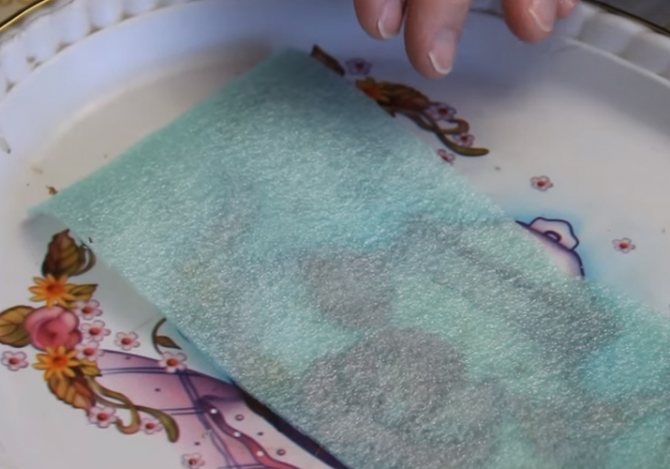

Prepare the seedling soil. Sprinkle it over the tape and compress slightly with your palms. The thickness of the earthen layer should be 1.5-2 cm.
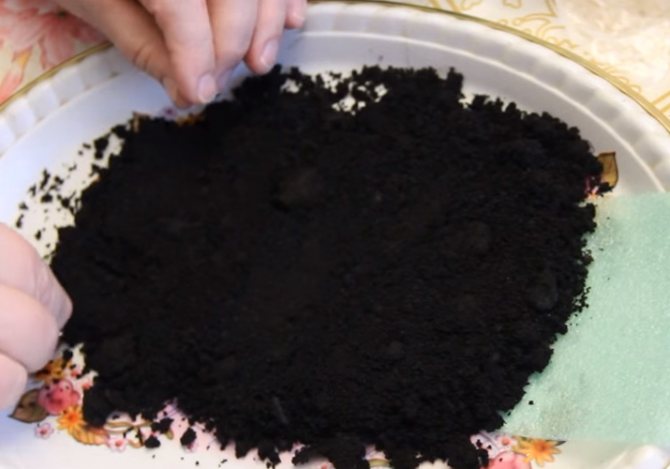

Lay the earth in this way and start rolling it up so that the earth stays inside.
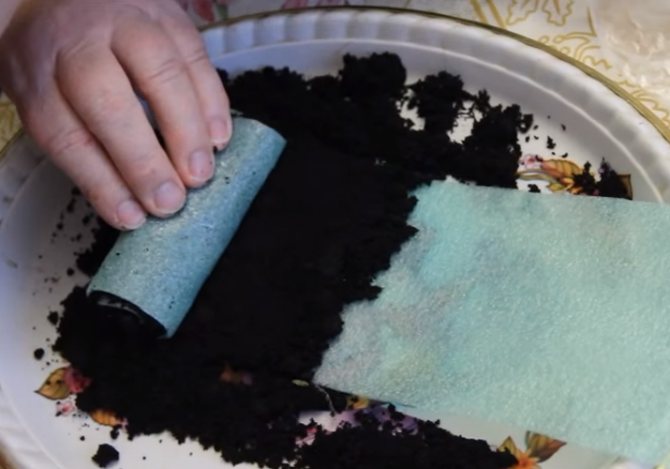

You should have a snail like this. We have a shortened version for clarity. Your tape can be longer and the snail from it will turn out to be larger in diameter.
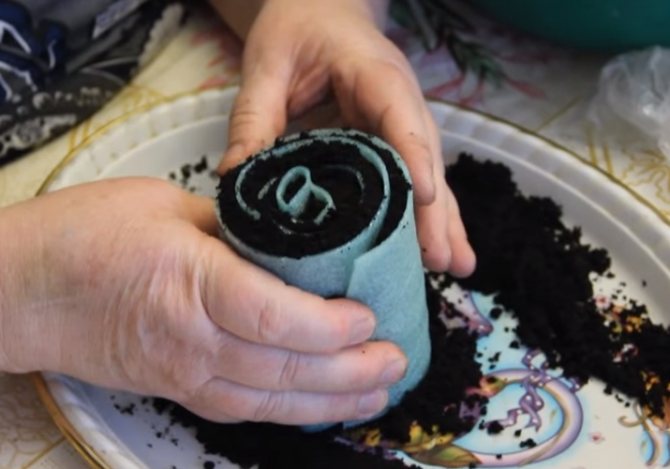

Secure the roll with an elastic band. The ground inside needs to be crushed a little, from above, so that the sides are better visible.
It is convenient to do this with your finger or pencil. It is advisable to spill the soil inside with Epin's solution (3 drops per 0.5 ml).
Wait for the water to saturate the soil well. With the same pencil, make small indentations in the ground (0.5-1 cm deep), at a distance of 3-4 cm from each other.
Place a seed in each groove. Sprinkle earth on top, but do not crush any more.
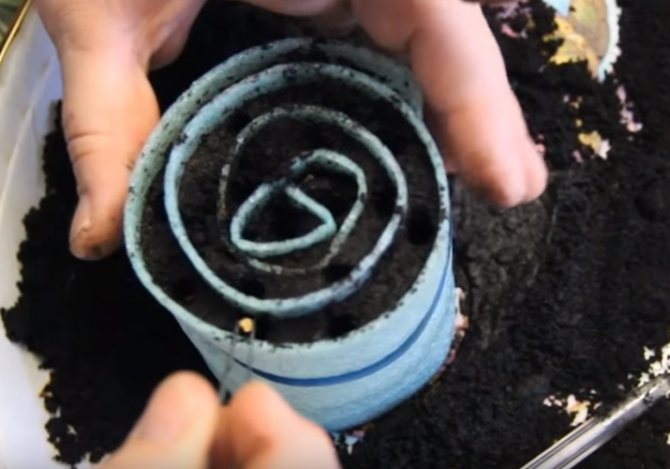

There is also an option when we do not make the indentation on purpose, but simply spread the seeds on the surface of the "snail" and press them with a toothpick to the same depth of 1 cm.
Both of these seed placement methods work the same, so pick whichever you like best.
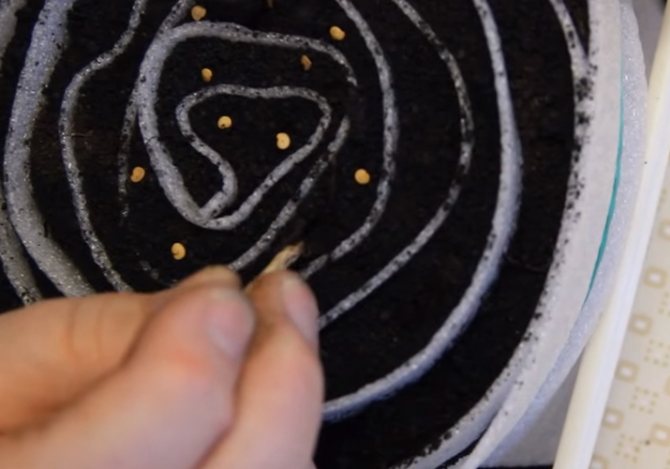

So, put the finished "snail" with seeds in a tray. Until the seedlings hatch, you no longer need to water it.
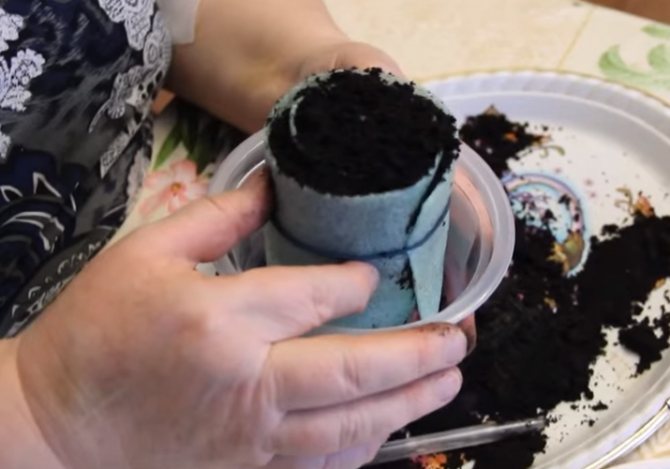

Cover the snail with a bag, creating a greenhouse. Place it in a warm place. Provide good lighting when the first shoots appear.
It should be a backlight or a bright place on the window, without access to cold air and drafts.
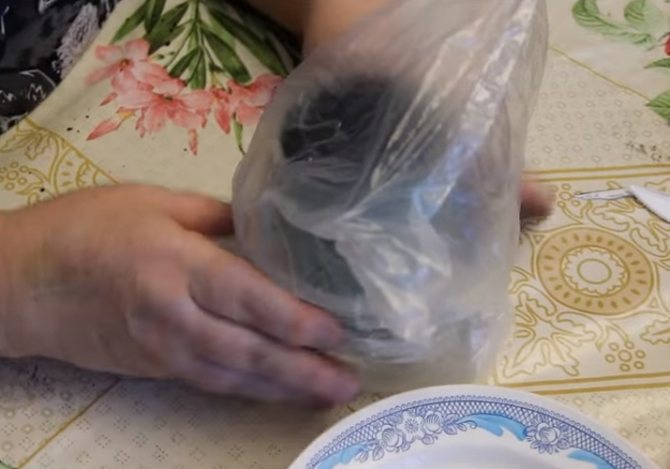

We remove the greenhouse gradually, when all the seeds sprout and get a little stronger.
Here is a way to get a large number of seedlings in a very small area.
We sow eggplant in boiling water
A high-speed way to get seedlings quickly. Planting in boiling water significantly accelerates seed germination.
You will need a plastic greenhouse, seedling soil, eggplant seeds and boiling water (not cool, but a few minutes after boiling).
Place the soil in the greenhouse and level it, observing the thickness of 3-4 cm. Pour seeds over the entire surface.
You don't need to scatter them, but lay them out in even rows. As you like best.
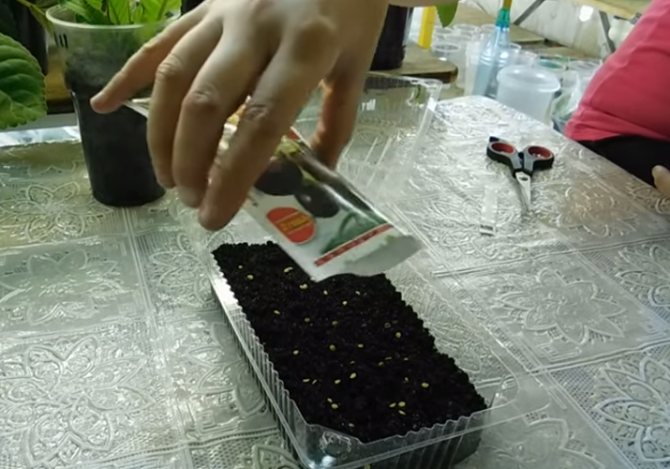

Pour boiling water over the seeds, but not too abundantly. So that the earth is moistened, but at the same time a swamp does not form.
In this method, we do not deepen the seeds, we leave them on the surface.
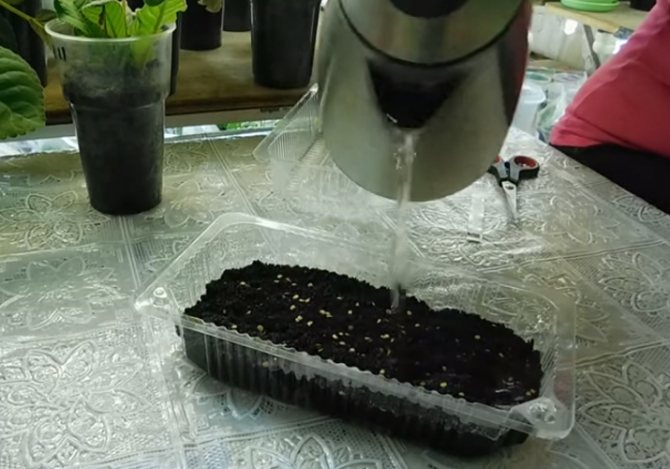

We cover the greenhouse with a lid, put it in a warm, bright place.
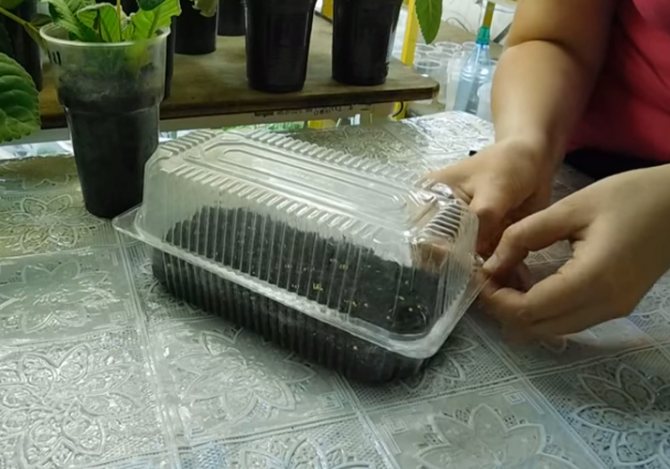

Seedlings will appear together in 3-4 days. If the seeds are of high quality and fresh, then the germination rate is 100%.
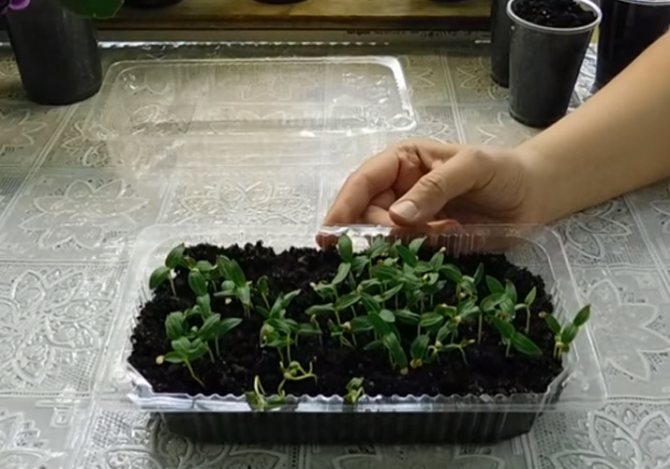

Here is such a good way, take note.
Eggplants in peat tablets without picking
It is easy and convenient to plant in peat tablets. Moreover, this method does not require picking, which guarantees the safety of the roots.
The seedlings grow completely stress-free, strong and healthy. Eggplants do not like picking, so this is very important for them.
But this method is unlikely to suit you if you need a lot of seedlings.
Before planting, you will need: a set of peat tablets in a tray with a lid, 500 ml of water, eggplant seeds.
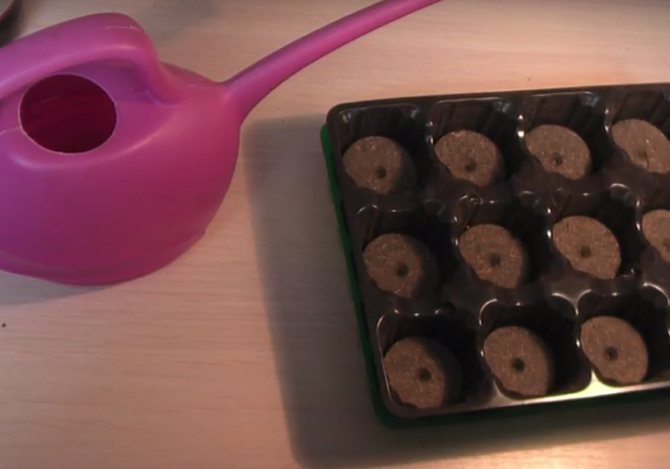

For the prevention of diseases, add Fitosporin to the irrigation water according to the instructions.
You can first remove the side shell from the tablets, if any.
Pour water over each tablet evenly and allow time to soak and swell.
Put a seed in each tablet.
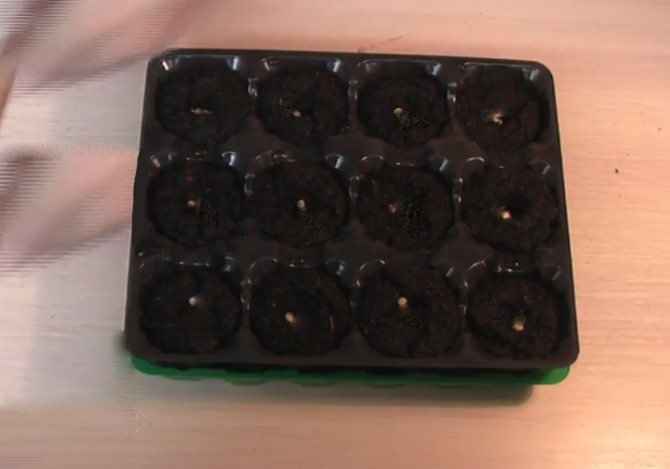

Set the seeds in about 1 cm and cover with tablet earth. Do not morning tightly.
It remains to cover the box with the included lid. Or, if it is not there, then any package is suitable for creating a greenhouse.
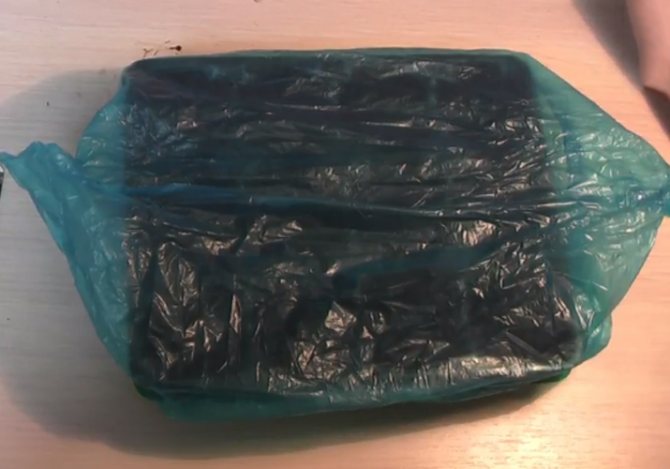

We put the tablets in a warm place and wait for the shoots.
When to dive eggplants
So, when we used one of the above methods of planting eggplant, we got the first shoots and now we have a question about picking.
If you planted eggplants in a "snail" or peat tablets, you do not need a pick.
Because the plant can be in the "snail" for a long time and grow to a decent size, then they are seated in individual glasses.
The same happens in peat tablets, the seedling grows and forms a good root system, and then, together with the tablet, is sent to a larger pot by transferring.
A pick is required when sowing was done in a crowded manner: in the traditional way or in boiling water, when a lot of seeds are in a small area and they interfere with each other.
In the phase when the plant has two true leaves, you can begin to dive. To do this, we prepare an individual cup for each seedling.
It is convenient to plant in peat pots, together with which it is then easy to plant seedlings in the ground.
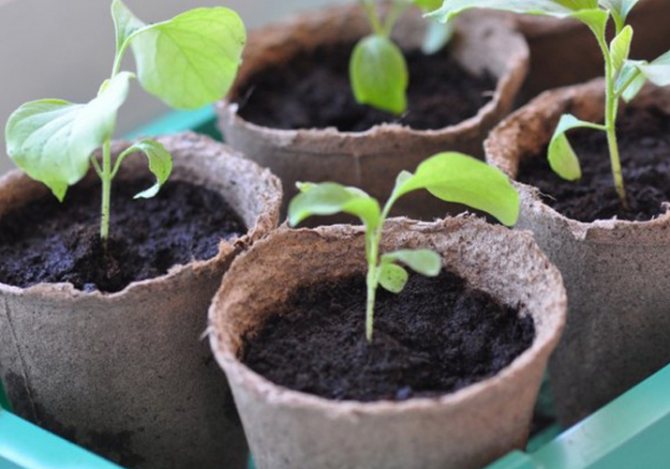

It is important to remember that when picking an eggplant, it is important for us not to damage the roots.
Therefore, if it is possible to dig an earthen lump together with the plant and pull it out without disturbing the roots, you need to do this.
We perform all manipulations very carefully. If you damage the root of the eggplant, it slows down for a long time and may start to hurt.
We place the seedlings in cups, deepen to the cotyledon leaves, while moistening with warm water. The first few days after the pick, the seedlings should be protected from direct sun and shaded.
Hypothermia should also be avoided.
Preliminary preparation
As with growing any seedlings, you need to stock up on reliable seeds, convenient containers and good, nutritious soil. From the point of view of packaging, there are no questions for eggplants: they must be grown in separate pots, not the smallest size, preferably peat ones, since they do not like transplanting. But first, you can sow in a common box or box to save space for a while, and then carefully plant the best specimens.
Seed preparation
It is necessary to start preparing eggplant seeds already in winter, at least to deal with varieties and purchase those that are suitable for a specific region. If in the south you can grow any varieties and hybrids, then in other regions you need to carefully look at what the seeds are for: for greenhouse cultivation or unprotected soil. In the open ground in the middle lane, only early and very early varieties and hybrids can be planted.
Since the seeds germinate for a long time, and the seedlings grow slowly, in mid-February it is time to deal with the seeds and start preparing them for sowing. And if they were bought several years ago, two weeks before that it is worth checking them for germination. To do this, a dozen seeds (although, of course, now they put only a dozen in a bag!) After soaking, they try to germinate on a wet cloth in the warmth. If half hatch within a week at 30 ° C, it's good.
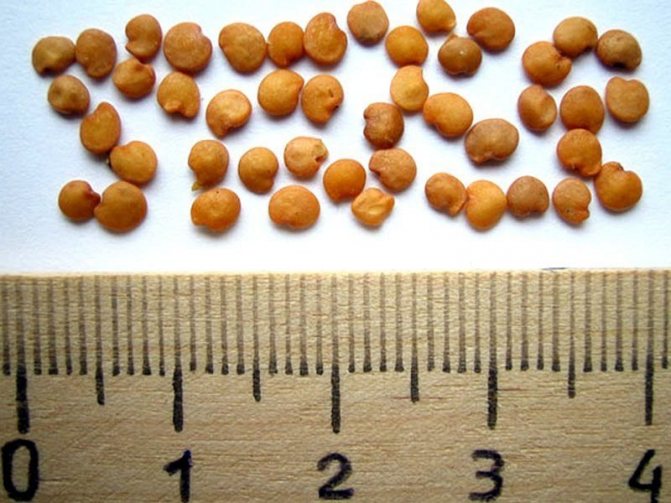

Eggplant seeds are very similar to tomato seeds.
Nowadays, purchased fresh seeds from well-known companies do not need to be disinfected: now seed-growing organizations are fighting for an honest name and are trying to sell only high-quality goods. But if in doubt, the seeds should be dipped in a dark solution of potassium permanganate for half an hour, and then washed with clean water. Eggplants are afraid of the slightest cold snaps, so it makes sense to harden the seeds by placing them in a damp cloth and periodically moving them from a warm room to the refrigerator and vice versa for 4-6 days.
On the day before sowing, it is worth treating the seeds with a growth stimulant (Epin-Extra, Zircon, etc.). Detailed instructions for the drugs are required on the packaging, it must be followed. And if, for example, for tomatoes this operation is completely optional, it only takes time and money, in the case of eggplants it is better not to neglect it: they will grow better and grow faster.
Soil preparation
Ready-made potting mixes for seedlings of a wide variety of vegetables and flowers are sold in the respective stores. As a rule, they are compiled based on the characteristics of the culture, but you can run into an obvious hack: ordinary earth poured into a bag. This is especially likely in the case of inexpensive mixtures. And the good ones are expensive. If it is supposed to grow no more than a dozen roots, it makes sense to buy ready-made soil, but only if eggplants are indicated in its purpose. In this case, preparation is not required, although you can hold the package for a couple of days in the cold.


If the package has the word "eggplant", you can take
For the most part, summer residents are not so rich, and they try to prepare potting mixes from available ingredients. It is good if ordinary peat is not a problem in your region: on its basis, the best soil for sowing eggplants is obtained. If you mix it in half with sod soil and add a little coarse sand, you can do without fertilizers at first, then replenishing the supply of nutrients with top dressing. But it is better to immediately add 10-30 g of any nitrogen, phosphorus and potassium fertilizers to a bucket of soil. Or a little urea and 150 grams of wood ash.
Self-prepared soil should be disinfected. Someone steamed it in the oven, someone ignited it on a baking sheet, but at high temperatures, not only pathogens, but also useful microflora perish! It seems that it is still optimal to pour the soil a few days before using a pink solution of potassium permanganate. The finished mixture should be placed in a box with a layer of about 8 cm and lightly tamped.
Eggplant seedling care
Let's take a look at the most important factors for maintaining proper development and growth of eggplant seedlings.
Let's talk about what conditions need to be created for seedlings.
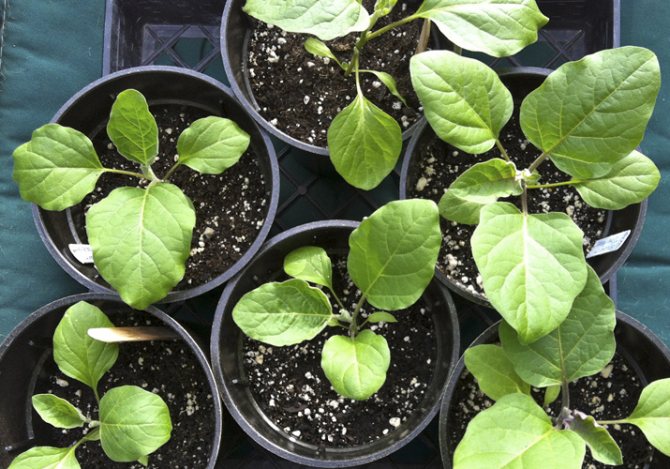

Lighting
Eggplant seedlings need intense lighting for at least 14 hours a day.
For illumination, you can use fluorescent or LED lamps.
Rotate the pots from time to time so that the eggplants do not begin to lean towards the light source and grow flat.
Temperature
The optimum temperature for eggplant seedlings is 20-24 degrees. Protect the seedlings from cold and drafts.
Watering
Eggplants do not tolerate drought, but they will not forgive you a swamp either.
Therefore, we water it after testing the soil with a finger, if the top layer is dry, then water it.
The amount of irrigation water depends on the size of the seedling: we water the very small ones little by little, the larger ones are stronger.
The water temperature for irrigation should be at least 22 degrees, because cold water will negatively affect root development and nutrient absorption.
Living space
As the seedlings grow, the cups with seedlings need to be moved apart from each other so that each has enough space.
The leaves should not touch each other. Overcrowding provokes the eggplant to stretch.
Prevention of diseases of eggplant seedlings
Healthy seedlings grown under suitable conditions generally have good immunity.
She successfully resists viral diseases, and in order to hedge against fungal diseases and pests, use the preparations Fitosporin and Fitoverm according to the instructions.
Feeding eggplant seedlings
We begin to feed the seedlings after the appearance of two to four true leaves, if the plants are planted without a pinning method.
If a pick was made, then we feed it 10 days after it. We dilute the first top dressing more so as not to burn the still tender roots of the eggplant.
You can feed with complex fertilizers such as: Fertika Lux, Gumi Kuznetsova, Agricola according to the instructions.
The Athlete fertilizer has proven itself very well, it helps the seedlings to build up a thick stem and strong leaves due to a strong root system.
If you took a prepared store-bought nutrient soil for seedlings, then you may not need feeding at all. There is a lot of nutrition in such soils.
Look at the seedlings, if it grows well, has a good stem, its leaves are green, then you can do without feeding.
Do-it-yourself universal eggplant feed:
For mineral feeding for the first time we make a solution: for 1 liter of water we take 1 g of potassium, 1 tsp. wood ash, 0.5 tsp. nitrate and 4 g of superphosphate.
The second time is organic feeding 10 days after the first. To do this, take 1 part of chicken manure (in granules or fermented) and 15 parts of water, leave for 1-3 days and water the seedlings.
1 week before planting seedlings in the ground, they are fertilized with superphosphate.
Also, a week before planting seedlings in a greenhouse or open ground, it is advisable to start hardening.
You can in short-term episodes: for 5-10-15 minutes, take out a box with seedlings on a covered loggia or balcony, if any.
Growing errors and problems
For novice gardeners, growing seedlings is often accompanied by problems. Their main reason is the violation of agricultural technology.
The most common problems when growing eggplant seedlings:
- The seedlings stopped developing after diving. Do not worry ahead of time and do not need to do anything. 7-10 days, the seedlings get used to the new conditions, and then they will grow. Inexperienced gardeners begin to intensively water and feed the seedlings, and this irreparably harms her.
- Blackleg. A disease that occurs with an excess of moisture. The disease begins with lethargy of the seedlings, later a thin belt appears near the roots. Normalization of watering and spraying with Previkur helps to prevent black feet.
- Hypothermia of the root system. If the seedlings are on a cold windowsill, there is a large temperature difference between the root system and the aboveground part. The seedlings look sick and depressed because of this. An insulating underlay helps to correct the situation.
- Mechanical damage to the leaves. They can appear due to pests that gnaw through the leaves. It is necessary to examine the seedlings and apply an appropriate insecticide. Also, mechanical damage may occur due to too close proximity of the lamps.
- Why are eggplant seedlings pulled out. There are several reasons for pulling seedlings:
- little light;
- too high a temperature;
- thickening of landings;
- too much nitrogen fertilizer;
- the seeds are sown too early.
- What if the seedlings turn yellow and wither? Yellowed leaves indicate a lack of nitrogen. The problem is solved by the introduction of organic matter or nitrogen-containing mineral fertilizers. Yellowing and wilting can also indicate improper care or disease.
- Why do the leaves curl? Leaf twisting is observed when the irrigation regime is violated, when using poor-quality water or with an excess of potassium. Also, the curling effect can provoke excessive lighting. You can not send bright light to the seedlings, it should be diffused and moderate.
- Why are the seedlings turning blue? Seedlings can take on a bluish tint for several reasons:
- phosphorus deficiency;
- copper deficiency;
- insufficient moisture;
- low temperatures.
You can also learn how to grow eggplant seedlings from the following video:
Growing eggplant seedlings is a painstaking task that requires constant attention and control from the gardener. Observing the rules of agricultural technology, you can prevent many problems and grow strong planting material.
0
Proven tips for good eggplant seedlings
- When planting, do not compact the soil, it should be moist, loose and breathable
- The optimum temperature for germination is 25-30 degrees
- While the seeds are under the film (in the seedling greenhouse) - no watering is needed
- The younger the seedling, the easier it tolerates the pick.
- When watering, it is better not to top up than to overflow
- Cold is the enemy of eggplant, temperatures below 15 degrees are critical
- A plant suitable for planting has from 10 true leaves (age 65-70 days).
- Before planting in the ground, spray with Epin-Extra
That, perhaps, is all about eggplant seedlings, dear friends. If the article was useful to you, save it to social networks using the buttons below.
46
Useful materials
Read other articles on growing and caring for eggplant seedlings:
- Different growing methods: in peat tablets, in a snail and even on toilet paper.
- All the features of sowing according to the lunar calendar.
- Features of cultivation in various regions of Russia: in the Urals, in Siberia and the Moscow region.

